When it comes to optimal team performance, strategies for preserving a safe space for discourse (i.e. “the middle ground”) is imperative. Teams who achieve great outcomes rely heavily on the middle ground conversations where ideas are shared and different opinions are welcomed. If teams have no safe space, there is no genuine growth or development in the organization or its employees.
In the last few years, there has been an increase in anger, unrest, and violence around the globe. Everyday, when you turn on the news, there is not much positive out there.
You jump on social media to catch up with stories about friends and colleagues and alongside each positive thread is a scroll full of anger and judgment.
As you walk or dive down the street, ride public transportation, go to the mall, eat at a restaurant, or travel on an airplane, you witness someone acting mean and rude to another, you wonder what has people so on edge?
Is Middle Ground Disappearing?
There is struggle because there is polarization. Political issues, health issues, personal choices, education, history, family issues, religion – all and more are game for attack. Issues are no longer local, they are debated at a national level and trickle down to create dissension and fear of sharing at the local level.
Polarization is a global issue. We feel the effects of it everyday.
All teams, regardless of type, are being pulled either consciously or unconsciously. How is this affecting your team? Is your team losing the ability to come to the middle on issues, progress, and outcomes or are they fostering great communication and relationships?
A polarizing culture does not have to mean teams will fall prey to it, but when they do, one or both of the following situations occur. On the one hand, people become afraid to say what they really mean at meetings or simply agree with everything leadership says. In this case, no arguments, conflict or differing opinions get voiced. On the other hand, no communication takes place at all. Folks avoid each other, avoid meetings and keep to themselves, within the framework of “just doing their jobs.”
What Does This Mean For Your Team?
In both situations described, optimal team performance and progress cannot be attained. Instead what appears is complacency. Complacency in that everyone is just doing their jobs avoiding situations when possible and mustering through the others that can’t be avoided.
Decisions are still made, but ultimately no unified decisions, collaboration or real teamwork exists. In fact, sometimes the unilateral decisions of leadership are a result of polarization. Leaders fear the consequences of lost revenue, negative news headlines, and upset customers. Therefore, they allow no discussion, forethought, or the middle ground opinions of their employees as they make decisions that may affect those very employees or the communities they live.
As you reflect on your leadership and check in with your teams, are the meetings genuine? Do they happen? Do meetings occur with the middle ground dialogue? Are you allowing the diverse opinions on your teams to exist and to help in solving the issues faced by the organization?
If you feel that your team, or leadership, has no cracks in the middle ground, then you are an example of how great teamwork can exist in spite of the difficult landscape of polarization. Preserving it is key to continued team success.

What Does Losing Middle Ground Look Like?
It becomes very difficult to preserve the middle ground on teams when there is a landscape of cracks across the company. If communication is placating, not genuine, or not happening at all, how does that affect the middle ground? If leadership does not allow open, honest and diverse opinions, what does that look like?
People won’t come together from different “sides” on issues and find commonalities and compromises. Instead, topics and interactions where known differences exist will be avoided.
These breakdowns on teams can have devastating outcomes; lack of production, poor performance, client dissatisfaction, low employee morale, quitting, mental health issues, anger, and much more.
And if the middle ground isn’t preserved, we’ll see much more of the above non-productive behaviors in the future. If no open, genuine communication exists then we are, in effect, erasing the opportunity to understand each other, compromise with each other, share diversity of thought, or work toward any type of authentic teamwork. Without that teamwork and cooperation, there would be no genuine friendships, families, business teams, sports teams, or community relationships.
So what can be done?

Team Strategies For Preserving Middle Ground
If the middle ground dialogue is missing on your teams or if you are a leader who cares about preserving it, leaders must put into place new strategies to shape what the culture looks like with healthy middle ground dialogue. The intent of these strategies is to uplift and optimize team performance.
The great thing about teams is that “working together” is a built-in function. In general, teams come together for a common purpose. When teams are functioning in a healthy manner, it’s magical and when they are not, it’s the opposite, as mentioned above.
Below are some strategies to help preserve and rebuild the middle ground.
Step One: Create An Empathic Culture
On every team, there is the opportunity to stand in someone’s shoes. Leaders at all levels can assist in developing a more empathetic culture. It’s not always easy, but a more empathetic culture is a healthier one.
You don’t have to be the CEO to help bring about this shift. You can effect changes where you are in the organization. Think about what you can do to make a difference on your team? For one, empathy does not equal weakness or lack of leadership. It simply means “people first” leading. Using language that uplifts empathy can help set the stage for how leadership views it.
Second, it could be useful for your organization to bring in thought-leaders from the outside, incorporating team building within meetings and company events, and finding ways to reward empathetic behavior.
Third, make empathy training part of the onboarding and educational required courses to move up in the organization. If in a position to do so, consider removing people from leadership roles and replacing them with more empathetic leaders. It may only take a few small shifts to open up to a more empathetic and caring culture.
Step Two: Allow Differences In Meetings
Work to allow differences to exist in meetings without judgment or stifling the conversation. Sometimes team leaders and employees try to steer the conversation away from conflict. That tendency is understandable; it’s uncomfortable to be in disagreement with someone.
But if the conflict or disagreement never has the chance to emerge, then the conversation is not going to begin or finish with any resolve. Optimum performing teams not only allow conflict and disagreement, they encourage it.
According to the Harvard Business Review, the more cognitively diverse teams solve problems faster. In other words, people who think differently, when allowed to come together, have a tendency to problem solve at a much faster rate than those who think the same.
By allowing differences you are fostering authentic, organic conversations. And promoting this type of communication is rebuilding and preserving the middle ground.
Further, when these conversations are genuine, beginning at the top of the organization and moving throughout, then trust in the team members also develops. Genuine communication is the foundation of all great teams.

Step Three: Establish Leadership Tracks
For those who demonstrate leadership that fosters and preserves the middle ground, establish the path to upward mobility. Identify those folks within the organization and give them every opportunity to grow in areas they need to improve upon so they can continue to build the desired outcome, reestablishing the middle.
When you have to hire outside the organization, take care to identify empathetic leaders and bring them in. Set clear expectations about the culture your company values.
Assign all leadership track employees mentors, give them access to courses, send them to educational seminars and show them the path leadership envisions for them. Hold them accountable to uphold the leadership methods you would like to see.
In order for leadership tracks to work, leaders have to know the people that make up the organization. These people are hand-picked after multiple evaluations and conversations.
Wrong picks within the organization, or as newly hired employees from the outside, could set the company back, so you want to be thoughtful in these choices.
Step Four: Be Open To Feedback Traveling Upward
Feedback is an essential step for preserving the middle ground on teams. Most feedback in organizations travels downward from top leadership to middle leadership to the rest of the organization.
Being genuinely open to feedback traveling upward not only shows you care as a leader, but also demonstrates you are willing to be vulnerable and hold the organization above yourself. Maybe your team makes you aware of your own blind spots or suggests new ways to better preserve and rebuild the middle ground. You may never know if you don’t ask.
Step Five: Take Action
Once feedback arrives, action must be taken. Action could be more communication, a change in policy, an apology, a press release, a company email explaining something, new hires or switching folks around in the company.
But action needs to be seen and heard. Even if the feedback is not as useful as you had hoped, if no action is taken, employees may see that as a dismissal. The more dismissals seen and heard by employees, the less feedback will come.
The less feedback that comes up the chain, the more opportunities slip past leadership to amend any issues that need to be addressed.
Step Six: Give Kindness Awards
An interesting idea arose when I recently spoke to a high school athletic director about his school now giving out “Kindness Awards.” It seems a little odd that we have to consider kindness as a reward instead of as part of our inherent human nature. But it makes perfect sense in today’s world, that we need to emphasize and reward kindness. Our children may not see it on TV, social media, in movies, or while they are scrolling social media pages. It makes sense to highlight it when and where we can. The athletic director said that it had an impact, and fairly soon after the program started.
It’s no different in organizations. The “Kindness Award” within an organization can be named many things. Kindness Award. Empathy Award. Best Team Culture Award. But take the step and watch the team culture evolve.
What does your organization need to emphasize and how will you reward when outcomes are achieved?

Step Seven: Create Team Challenges
The middle ground doesn’t mean we don’t have challenging discourse. It’s simply exercising that muscle and finding positive outcomes for everyone. One way to do that is to set up a team competition that encourages new ideas, new strategies. Setting up team challenges also allows leadership to select teams with the intent to heal cracks in the middle ground. For example, two employees who do not see “eye to eye” could be partnered on the same team. They would be required to work against other pairs in the organization. Each team would have to work together, shelving their differences, in order to win the competition.
Make the outcome and the reward significant enough to be worth striving for. In other words, it must take some real teamwork to achieve the outcome.
The reward could be a nice raise, a promotion, an office move, a destination reward, or more recognition within the organization.
As leaders, you can set up fun, healthy, creative challenges that make working together fun. When set up thoughtfully, all participants have a role in the challenge and all teams have equal access to resources, assistance, and the guidance necessary to complete the project and hit the targets.
Challenges are a great way to incorporate all of the strategies toward building back the middle ground. And they can be fun.
Step Eight: Practice
This may sound cliche, but if you want your team to perform better, you have to practice. Changes will not happen overnight.
What to practice:
- Educate on the different cultures that exist in your organization.
- Allow for healthy debate over differences.
- Establish the leadership tracks.
- Set up feedback channels and policies.
- Take real action and let it be seen and heard.
- Create and promote your “kindness awards.”
- Masterfully brainstorm and build your challenges throughout the organization.
Continue to practice, change and tweak your company policies and strategies to meet the changing demands within your company as it relates to the middle ground. What follows is an organization where the middle ground flourishes and peak performance and teamwork soar.
And then practice some more.
It Starts With You
Putting the above strategies to work takes strong and committed leaders and employees. You don’t have to be the company CEO to begin to affect change. Rebuilding and preserving the middle ground on teams can begin anywhere and with anyone. Will you step up to the challenge?
Leadership, Team Strategies, Teamwork
